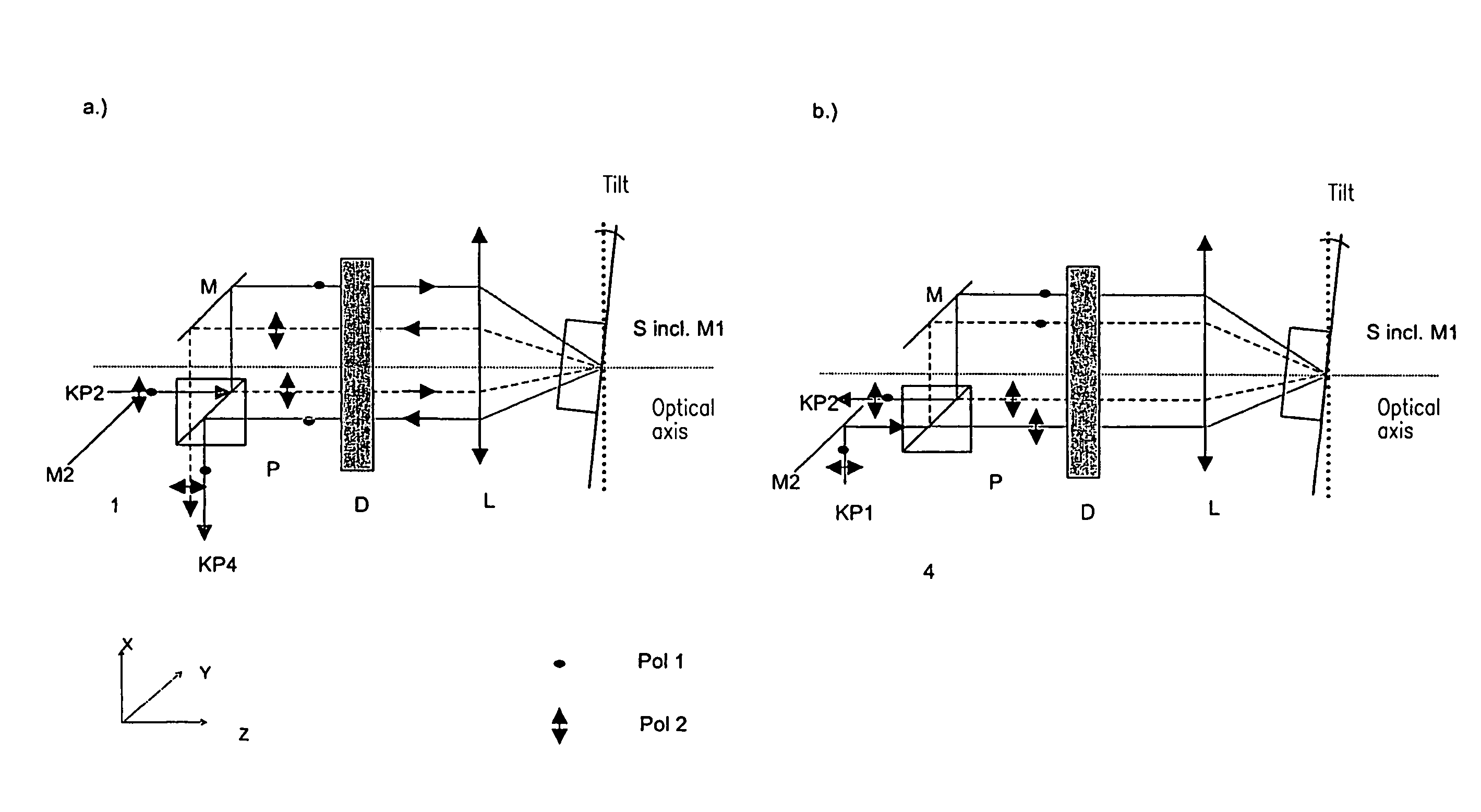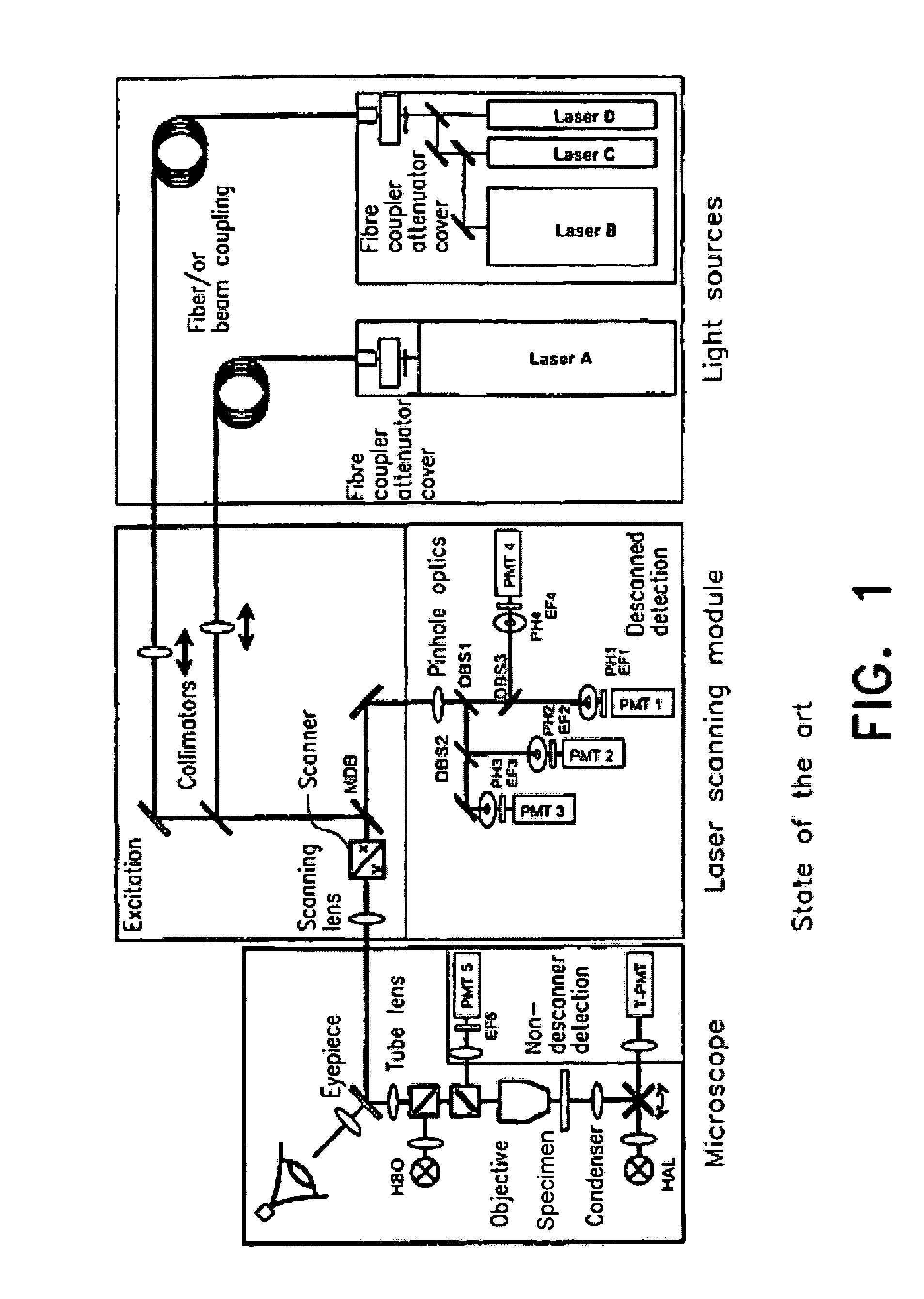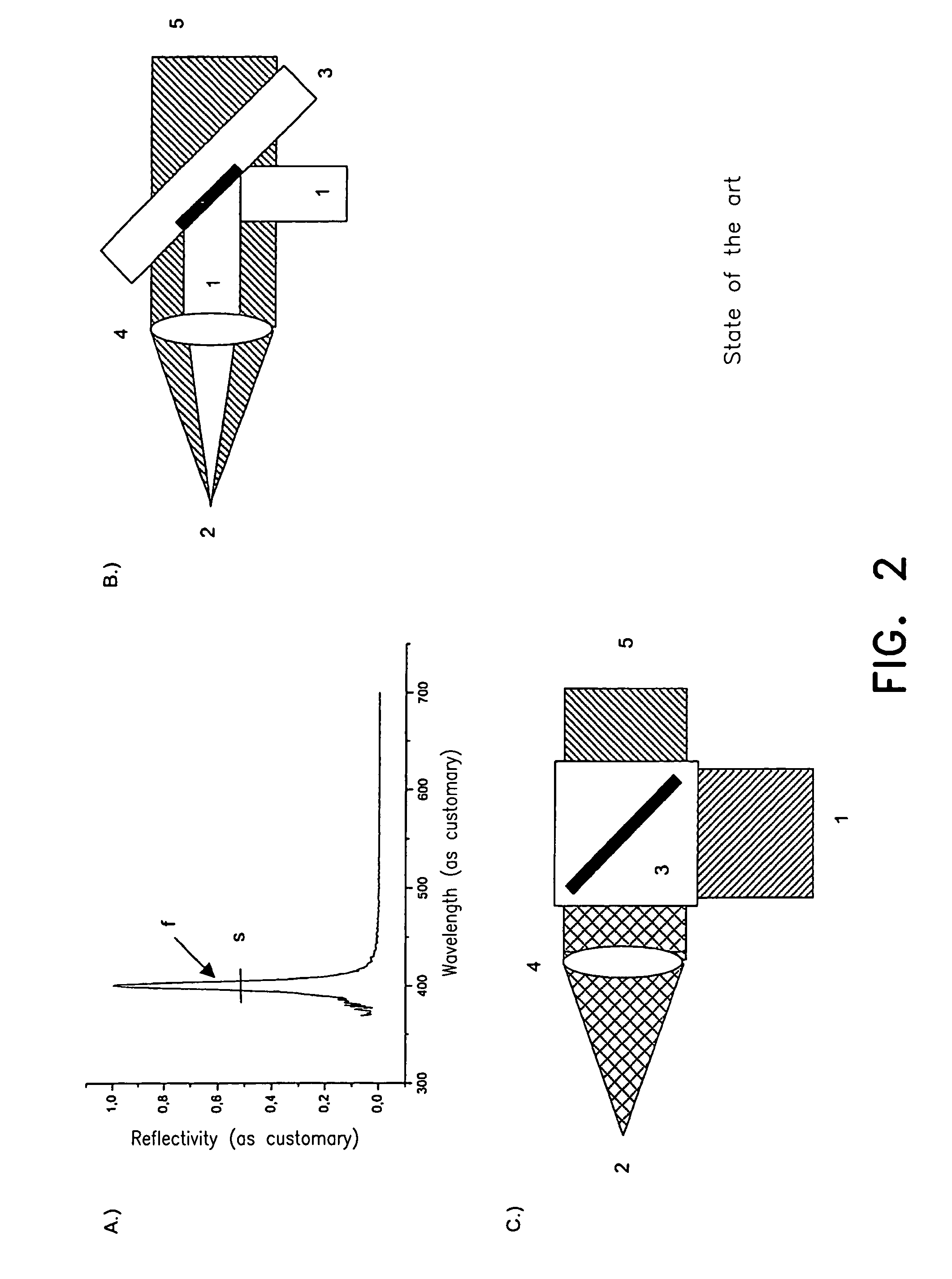Method and device for changing light in an adjustable manner
a technology of adjustable light and light, applied in the field of microscopy, can solve the problems of poor efficiency of separation of excitation light from emitted light, affecting the optical resolution of the arrangement, and reducing the efficiency of detection
- Summary
- Abstract
- Description
- Claims
- Application Information
AI Technical Summary
Problems solved by technology
Method used
Image
Examples
Embodiment Construction
[0052]FIG. 4 shows the inventive arrangement in reflection.
[0053]In FIG. 4a, an essentially unpolarized light from the specimen reaches a polarizing beam splitter P by way of a coupling port KP 2, is split by this polarizing beam splitter into perpendicular polarization components (arrows or dots). In this respect, one component reaches directly a dispersive element D; and the other component is mirrored at the splitter P and reaches the element D by way of a mirror M and is split spectrally at said element.
[0054]The radiation is focused on the SLM S and the mirror M1 in the plane S / M1 by means of a lens L; and, thus, its polarization can be affected in a number of ways as a function of the wavelength. Hence, the polarization of the individual spectral components of the light, which arrive again in the direction of the polarizing beam splitter P, can be varied. The SLM can comprise actively controlled liquid crystal cells.
[0055]In the plane of the SLM S, the polarization of the indi...
PUM
 Login to View More
Login to View More Abstract
Description
Claims
Application Information
 Login to View More
Login to View More - R&D
- Intellectual Property
- Life Sciences
- Materials
- Tech Scout
- Unparalleled Data Quality
- Higher Quality Content
- 60% Fewer Hallucinations
Browse by: Latest US Patents, China's latest patents, Technical Efficacy Thesaurus, Application Domain, Technology Topic, Popular Technical Reports.
© 2025 PatSnap. All rights reserved.Legal|Privacy policy|Modern Slavery Act Transparency Statement|Sitemap|About US| Contact US: help@patsnap.com



